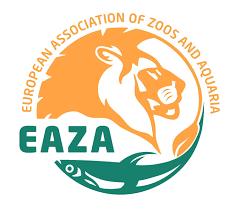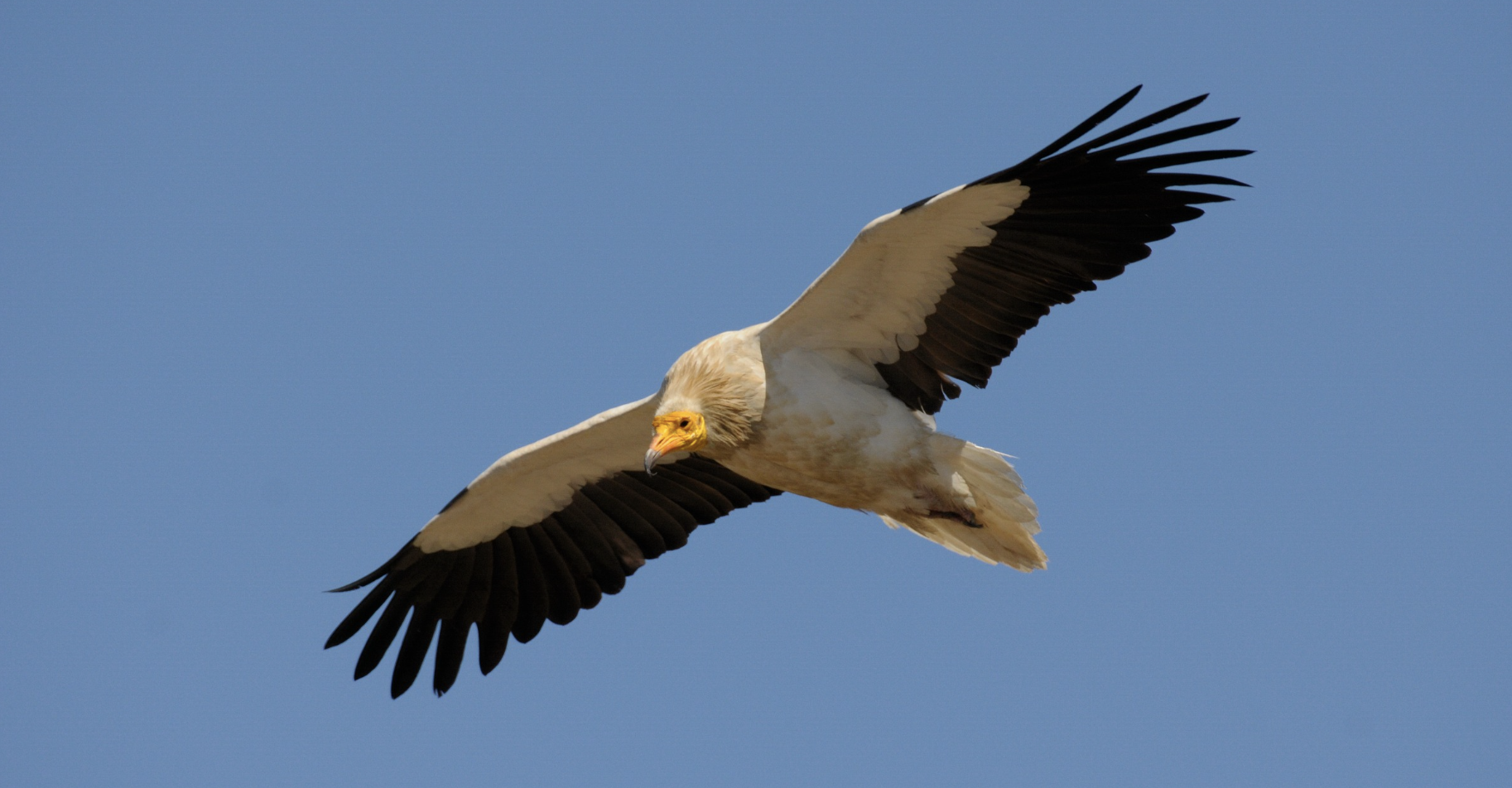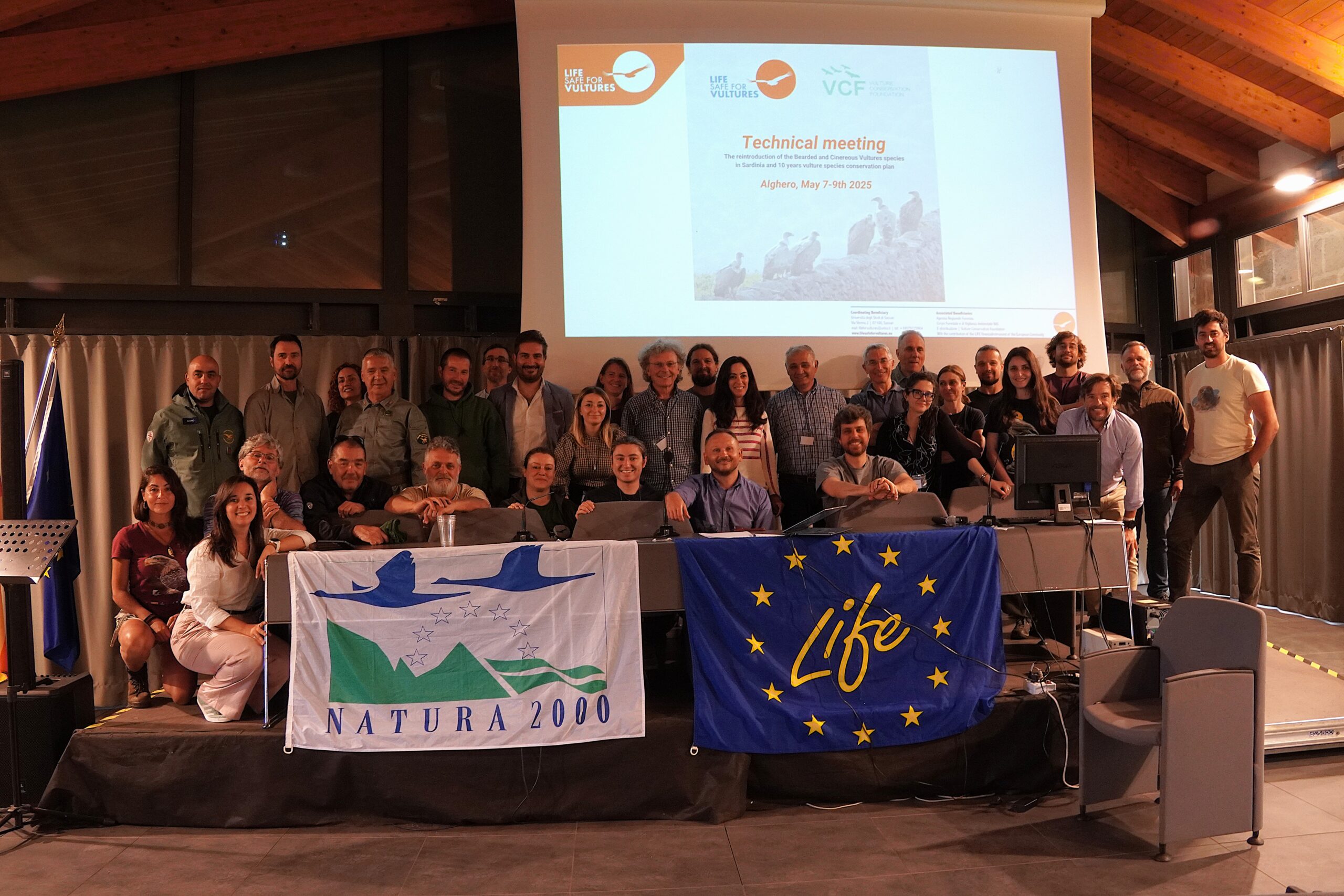The Egyptian Vulture (Neophron percnopterus), a species listed as globally endangered, has recently seen promising developments in its conservation across the Balkans. The rocks of Meteora, Greece, welcome an Egyptian vulture chick for the first time in six years. Bulgaria celebrates the “graduation” of six young individuals from the “Egyptian Vulture School” acclimatisation aviary.

The little miracle of Meteora
Meteora, a breathtaking rock formation in the regional unit of Trikala, in Thessaly, Central Greece, is the home of a male Egyptian Vulture since 2018. He is the last individual that comes back in the area after the spring migration from Africa.
This year something changed. In April, members of the network “Friends of the Egyptian Vulture” informed the Hellenic Ornithological Society – BirdLife Greece (HOS) about the presence of a second bird in the area. Although it is common for Egyptian Vultures to fly over Meteora heading to their summer retreats, extensive survey confirmed this was not the case. After few days, HOS’ field researchers found the nest and immediately started monitoring the pair, in collaboration with Greece’s Natural Environment and Climate Change Agency (NECCA) and the Forestry Service of Kalampaka.
At the beginning of June, after months of monitoring, the researchers were able to spot a little Egyptian Vulture chick in the nest. The next weeks will be crucial for the survival of the chick.
The little miracle is the result of coordinated efforts by HOS, within the Egyptian Vultures New Life project network, which has been working in tandem with local communities, authorities, and international partners to create a safe environment for vultures. These efforts include setting up feeding stations, ensuring safe nesting sites, and raising public awareness about the importance of these scavengers in maintaining ecological balance.
It’s time for graduation in the Eastern Rhodopes
While Greece was celebrating the chick in Meteora, Bulgaria was busy getting six young Egyptian Vultures ready for their life in the wild within the Egyptian Vultures New LIFE project.
Out of the six protagonists of this successful story, three hatched in captivity within the EAZA Egyptian Vulture ex-situ breeding programme: Nika was raised in Prague Zoo, and Adela and Sylva were raised in Zoo Ostrava (Czech Republic). The other three young vultures – Veli, Kaloyan and Electra – hatched in the wild in Eastern Rhodopes but were raised in captivity at the Wildlife Rehabilitation and Breeding Center – Green Balkans (WRBC). They have a similar story, they hatched very late during the 2023 breeding season and therefore had low chances of survival in the wild. Given the importance of every single individual for the survival of the species, the three chicks were raised by professionals and are now ready to start back from where they left.
The “Egyptian Vulture School” is situated in the core area of the species population in Eastern Rhodopes and managed by Bulgarian Society for the Protection of Birds/ BirdLife Bulgaria (BSPB) The six young vultures spent over two months in the adaptation aviary under the care of BSPB Bulgaria experts. Acclimatisation aviaries allow young and inexperienced birds to observe and learn from wild individuals visiting the area. In addition, they offer a safe space for the birds to get used to the local conditions, learn the best place to roost and practice their flight skills. A month before release the birds were equipped with GPS/GSM transmitters and underwent the last veterinary check by the vets from the WRBC.
Finally, at the beginning of June, the six young Egyptian Vultures experienced life in the wild. The first weeks after a release are critical for the survival of the birds and the experts of BSPB closely monitored them.
A few weeks after the release, five of the six birds are regularly visiting the feeding station provided by BSPB. The GPS/GSM transmitters signal that they are easily moving around and exploring the territories around the release area. Only Kaloyan shows an adventurous personality: he made a trip to north Romania and back to Bulgaria, only to settle in the north of the country. The team is monitoring him with special attention, hoping he will come back to the more familiar area in the Easter Rhodopes.

Poisoning: a worldwide threat for vultures
These two successful stories with Egyptian Vultures protagonists have another common ground: poisoning threat. Poisoning is one of the most dangerous and widespread threats for vultures. It can wipe out years of conservation progress in just one day.
Threat mitigation is one of the most important parts of conservation actions. When it comes to poisoning there are several actions that can be implemented to reduce this threat:
-
- Building feeding stations in collaboration with local livestock farmers. These areas offer safe food sources for vultures and an excellent monitoring area for conservation teams
- Collaborating with anti-poison dog units.
- Inform people about direct and indirect poisoning including lead ammunition poisoning and Diclofenac use.
- Raising awareness and building the capacities of authorities and relevant stakeholders in the Balkans to investigate and prosecute illegal wildlife poisoning, led by the BalkanDetox LIFE project to deter offenders.
Gradual progress of conservation efforts
The Egyptian Vulture is among the most threatened raptor species in Europe. It is classified as endangered, and its population is declining worldwide. Greece holds only 6 remaining pairs, while Bulgaria counts 27 breeding pairs. For these reasons, every new Egyptian Vulture is a reason to celebrate and a precious individual for the species.
The hatching of a new wild Egyptian Vulture in Greece and the release of captive-bred individuals in Bulgaria are testaments to the incredible international and national efforts to protect this species. The path to a full recovery for Egyptian Vultures is still long, but successful stories like these warm our hearts and give us new energy to keep working for their conservation.







